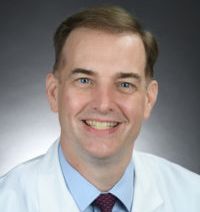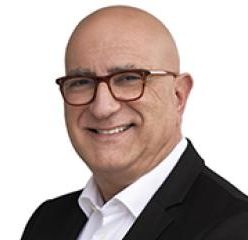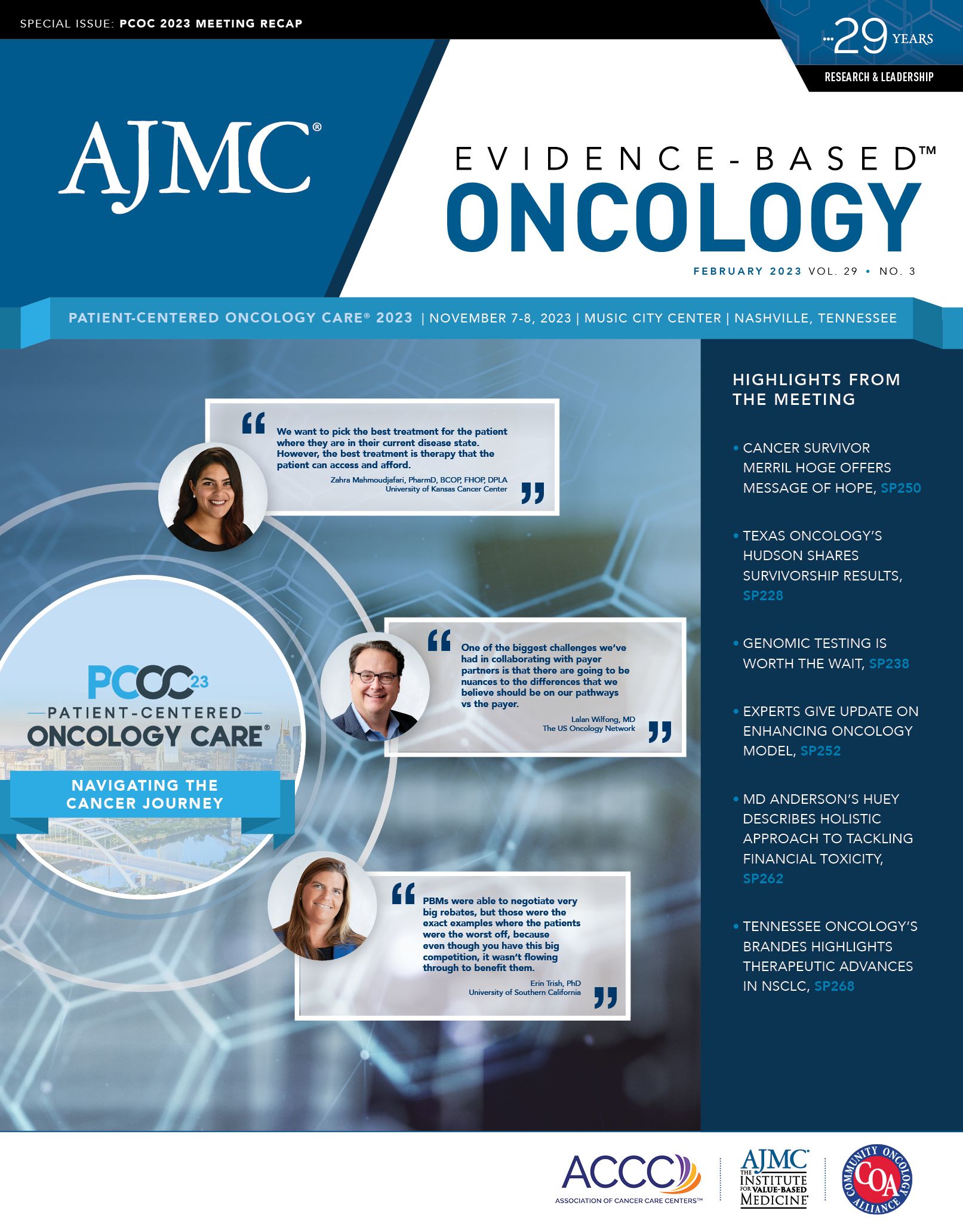- Center on Health Equity & Access
- Clinical
- Health Care Cost
- Health Care Delivery
- Insurance
- Policy
- Technology
- Value-Based Care
Genomic Testing Is Worth the Wait When Balanced Against Cost of the Wrong Therapy
Coverage from the discussion, "Cancer Genomics: The Gateway to Access and Health Equity” on the first day of Patient-Centered Oncology Care 2023.
When it comes to genomic testing in cancer care, the waiting is the hardest part.
Sibel Blau, MD | LinkedIn photo

Turnaround times of 11 to 14 days for next-generation sequencing (NGS), which can let clinicians pinpoint treatment targets and select therapies to match, can discourage some patients from waiting for results—to their own detriment, said Sibel Blau, medical director at Northwest Medical Specialties in Puyallup, Washington, and president of the Quality Cancer Care Alliance (QCCA).
Davey Daniel, MD | Tennessee Oncology photo

“Eleven days is not a long time to wait,” Blau said, during the panel discussion “Cancer Genomics: The Gateway to Access and Health Equity” on the first day of the 2023 Patient-Centered Oncology Care (PCOC) conference, presented by The American Journal of Managed Care.
Joseph Alvarnas, MD | City of Hope photo

“I think there’s this culture that we have to start the chemotherapy or the treatment yesterday,” she continued. “I think the education of the doctors and the education of the patient is very important. Now, there are cases where you have no choice—we have to start treatment as soon as possible. But starting the wrong treatment—No. 1, it costs more money. And No. 2, it causes more patient care issues and [adverse] effects [from] unnecessary, toxic treatments.”
Bryan Loy, MD | Humana photo

Moderated by Davey Daniel, MD, a medical oncologist with Tennessee Oncology and chief medical officer for the OneOncology platform, the panel explored recent developments in genomic testing and the connection between access to testing and equity in outcomes. Joining Daniel and Blau were PCOC Cochair Joseph Alvarnas, MD, who is vice president for government affairs at City of Hope and chief clinical adviser, AccessHope; and Bryan Loy, MD, who is physician lead for Oncology, Laboratory, and Personalized Medicine at Humana, an insurer well known for its Medicare Advantage plans.
Daniel started the session by asking Alvarnas to trace the use of genomics at City of Hope, a world leader in treating hematological cancers. Alvarnas described the simplistic classification system for leukemias during his fellowship days—based solely on how cells looked under a microscope—and the typically poor outcomes. Using data, by contrast, has meant that mutations, such as FLT3 seen in acute myeloid leukemia, “not only portended how that patient might do over time, but also [directed] therapeutic interventions,” he said.
Use of biomarkers and NGS has ushered in measurement of minimal residual disease, which Alvarnas said can help clinicians decide whether patients with acute lymphoblastic leukemia should be referred for transplant. “I have a deep respect for the rapid evolution of how we can use these care technologies to differentiate patients who under the microscope might otherwise look entirely identical,” he said.
The genomics revolution has come more slowly in care for solid tumors than in hematology, Daniel noted, “but I do think that things are changing.” Testing rates are rising, he said.
Blau shared how Exigent Research, born from a partnership between QCCA and the National Cancer Care Alliance, has made access to structured NGS data and clinical trials a possibility for community providers. Physicians who take part in trials do more testing, and this raises the bar for all care. “Once you start doing something, you get in the habit of doing it more,” she said.
But when patients will not wait for test results, they miss taking part in a trial. Blau has seen it happen. She sees a need for physicians to properly educate patients about the value of genomic testing, but also for payers to reduce barriers that burden small practices. Daniel asked Loy for insights on this issue.
“We go into some of the labs to say, ‘What can we do to reduce this turnaround time in 14 days?’” The best turnaround he’s seen is 11 days, but even that requires a conversation with the patient. “And that takes the time,” Loy said. Physicians must convey the value of testing—and what patients can expect from therapies that require this step.
Testing can be the norm, Daniel said. At Tennessee Oncology, KRAS and EGFR testing occurs “90% of the time” for patients with non–small cell lung cancer. Alvarnas agreed with Daniel and with Blau’s assessment of the cost of not waiting, because some targeted regimens do not call for adjuvant chemotherapy.
Blau described a study involving patients with triple-negative breast cancer (TNBC), which called for evaluation of different metastatic sites by a large tumor board every time the patients progressed.1 The board had support from a bioinformatics team, “reading everything from whole exome sequencing to genome sequencing to RNA sequencing,” she said.
Breast masses are now being recorded and included in these analyses, and some patients on the study lived up 8 years, which Blau emphasized far exceeds the expected life span after a TNBC diagnosis. “The patients were amazing,” she said, “They were not hesitating at all to participate in testing....They were contributing to this, knowing that they had the ominous diagnosis of metastatic triple-negative [breast cancer] with a 13-month overall survival. They were participating partly because they wanted to help the science.”
“That’s important for us to address,” Daniel responded. “I think with proper education, we can put that question of patient reluctance to rest.”
Alvarnas said it’s important “to bring patients on the journey” and address barriers such as language differences or lack of education. Giving patients a full explanation of what a bone marrow biopsy and aspiration can and cannot tell clinicians, for example, will lay the groundwork if a patient’s genomic profile indicates that refractory disease is likely.
“You can have a better quality of partnership with patients and families,” Alvarnas said “The degree of knowledge and sophistication that we’re having to try to integrate into clinic visits has again changed dramatically over the last couple of years. And it becomes one of the challenges and the opportunities of this new domain and care.”
What Should Testing Look Like?
Daniel invited the panel to discuss what an ideal testing landscape would look like, and he discussed the concept of “infrastructure applicability over time,” referring to the need to connect the many entities using tests and to ensure shared learning as more tests are ordered and their data stored. Deciding what tests to order is another challenge. If multiple tests are ordered when 1 might have been provided actionable information, is that appropriate?
“Try to make sure you’re not sorry you asked me this question,” Loy said.
Loy explored at length the issue of testing quality; studies have shown variation in results for the same sample. There isn’t a system to ensure that only high-quality, accurate tests are used, he said, and the public has no idea. Although coverage for testing for Medicare Advantage plans is governed by national coverage determinations (NCDs), there are still unknowns. It’s essential, he said, to “stick with the science” that led to a therapy’s approval, including using the right test.
“We’ve got folks that submit CPT [Current Procedural Technology] codes to us and we have no clue whether this was the original test that was on the FDA label or whether it was manufactured out of Joe’s garage,” Loy said. “Until we put some accountability in place, it’s kind of hard for us as a payer to begin to promote it.”
Both Blau and Alvarnas agreed there are quality concerns, but Alvarnas said there’s a lack of standardization among payers, too. “Looking at California, one of the things that we’ve seen within our Medicaid program is inconsistent access to any biomarker testing,” he said, noting the passage of legislation now in effect that will ensure that these patients can have testing.2
“To only bring biomarker testing to the most privileged members of our society doesn’t advance care equity because of diversity within populations,” Alvarnas said. “The question isn’t only coming up with access points and payment policies, but also making sure that they’re available broadly enough that the learning dataset represents the full diversity of humanity.”
What About the Learning Curve?
Loy noted that while there has been progress, there are still knowledge gaps when it comes to genomic testing, certainly among patients but also among some physicians. “Folks don't understand the difference between genetic and genomic testing. They don’t understand germline or somatic testing. And there’s a stigmatization already [when] talking about genetic testing even more broadly,” he said.
Daniel said it’s possible some variability in testing is patient driven. “But I would say that after 20 years in medical oncology spending time with patients, [including] some thoracic oncology patients, I’ve never had a patient say, ‘Don’t do genomic testing on my tumor.’”
Kenutcky, where Humana is based, also passed a law to require payers to cover biomarker testing in response to the state’s high rates of lung cancer.3 At least 3 more states are considering legislation, Daniel said. “There’s a big movement toward requiring appropriate biomarker testing to be covered by payers,” although there is variability that is troubling. “Some don’t require Medicaid to be included, and I think that we all see this is a huge inequity right there.”
Legislative mandates are not necessarily good for medicine, he noted. “How do you write something that can be interpreted clearly but also has ability to change over time?”
Alvarnas addressed this. He helped write language to define “appropriate” testing under California’s new law. “It’s open-ended in some ways and it invites collaboration between clinicians and payers,” he said. For example, anything included in an NCD should be covered.
The new Kentucky law avoided creating inequities, too, Loy said. Testing must be covered, for example, if use of an FDA-approved therapy requires an FDA-cleared test. The law also extends coverage to anything addressed in a CMS local coverage determination for that region.
“I think that’s a great first start because I can’t imagine that doctors like to be in the position of saying: ‘I’m treating you as a patient. Let me figure out what line of business that you’re in and see what you’re eligible for.’ I see that as problematic,” Loy said.
Continuing to share knowledge is critical, Blau said, because outdated requirements can limit patient care. Doctors are reluctant to order tests if it means battling insurers or risking lack of reimbursement. Daniel said among the OneOncology practices, “my 3 in California are the ones that suffer the most.”
Alvarnas explained this is because California operates under a “delegated risk” model that purposely constrains care. Within California Medicaid, he said, “The number of restrictions placed upon clinicians and the lack of scalability of the system really hampers our ability to maximize the ability of clinicians to fully leverage what represents best-in-class choices.”
Relying on the Data
“As physicians, we will always be on the cusp of new technology. We want our patients to have availability. But we realize we don’t always have perfect knowledge of where the testing is going,” Daniel said. What is the right response from the oncology community?
“I feel like we’re at a real crisis because these therapies aren’t always available to all patients,” he said. “But also, I don’t know how to use them sometimes.”
There is a difference, Daniel said, “between adoption of therapy and acceptance of where there is really proof.” He asked Loy if the field needs more evidence.
Loy cited the example of approvals for tumor-agnostic therapies. “We’re still learning our way into where those are the most effective, and I don’t see any way around it other than to deploy some real-world data collection to generate real-world evidence” to understand where the knowledge gaps are.
Amid the increased complexity of the science, Blau said, the only way to keep up is to rely on data. “You have to have an adaptive approach to treatment,” she said. Using a data warehouse such as the one available through Exigent is “the only way” there can be analyses about subsets of patients with certain biomarkers. This information must then be conveyed through decision support tools. Using community oncology practices to both gain and share knowledge is key, she said.
The current system, which relies on peer-to-peer appeals and mountains of prior authorization paperwork, is not working, she added. Physicians are overwhelmed. “We need to really find a way to have adoption of the new technologies and the new data and the new treatments by doing a tickler methodology,” she said.
Daniel asked Loy what the biggest step forward would be to promote equity in genomic testing, and Loy pointed to patient advocacy and shared decision-making to ensure that patients understand the importance of testing. “We’ve got to figure out how to make it clear what we cover because it’s pretty clear that the national coverage determinations that apply to traditional Medicare apply to Medicare Advantage plans. And I don’t think folks know that.
“I hear lots of stories, but I have to tell you, even with my own company, we try very hard to get out of the way when folks are providing good, quality care,” he said. “But we can’t reach out as a health plan and say, ‘We think you need all of this test’ because that gets interpreted as ‘You’re trying to tell us how to practice medicine.’”
In the absence of up-front guidance, the best a payer can do is fill in gaps when providers seek prior authorization for a therapy, he said. “I’d like to see something proactive, where [if] we know that the science is sound, and we know that the outcomes are likely to be in favor of the patient, we can all collaborate,” he said.
References
- Kuderer NM, Burton KA, Blau S. Participant attitudes toward an intensive trial of multiple biopsies, multidimensional molecular analysis, and reporting of results in metastatic triple-negative breast cancer. JCO Prec Oncol. 2017;1:PO.17.00076. doi:10.1200/PO.17.00076
- Governor Newsom signs game-changing legislation aimed at improving health outcomes, quality of life for Californians. News release. American Cancer Society. October 7, 2023. Accessed January 22, 2024. https://bit.ly/3Oc3hv7
- Schreiner B. Kentucky passes cancer testing mandate for insurers. Associated Press. March 14, 2023. Accessed January 22, 2024. https://bit.ly/3u2SNr3

